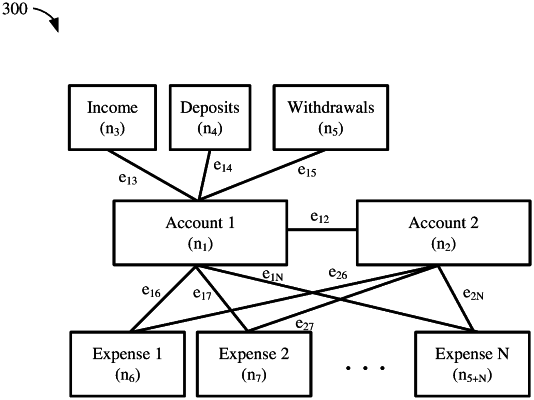| CPC G06Q 40/02 (2013.01) [G06F 17/17 (2013.01); G06F 18/217 (2023.01); G06F 18/231 (2023.01); G06N 3/082 (2013.01); G06N 3/084 (2013.01)] | 16 Claims |

|
1. A method of forecasting cashflows across one or more accounts of a user using a deep neural network (DNN), the method performed by one or more processors of a computing device associated with the DNN and comprising:
retrieving data for each account of a plurality of accounts, the data indicating transactions of the corresponding account;
constructing a graph including a plurality of nodes linked together by a multitude of edges, wherein each of the nodes indicates a time series value corresponding to one of the accounts, and each of the edges indicates a time series value of a corresponding set of transactions occurring between a corresponding pair of accounts;
determining a plurality of constraints associated with a time series prediction for each node of the plurality of nodes, wherein the plurality of constraints include one or more equality constraints, one or more inequality constraints, or one or more log-likelihood constraints;
determining a specified loss function based on the plurality of constraints and respective weighting factors for each of the one or more equality constraints, the one or more inequality constraints, and the one or more log-likelihood constraints;
back-propagating a derivative of the specified loss function into the DNN to determine a set of neural network parameters, wherein the determined set of neural network parameters comprises the set of neural network parameters, ω=Argminω(λLNLLH+λEE+λII), wherein:
λL, λE, and λI are the respective weighting factors for the one or more log-likelihood constraints, the one or more equality constraints, and the one or more inequality constraints;
NLLH is a loss term based on the one or more log-likelihood constraints, wherein NLLH comprises the sum of the negative log-likelihoods for the respective nodes and edges of the graph;
E is an error squared penalty term based on the one or more equality constraints; and
I is an error-squared penalty term based on the one or more inequality constraints; and
forecasting, using the DNN, a time sequence for each of one or more nodes of the plurality of nodes based at least in part on the set of neural network parameters.
|